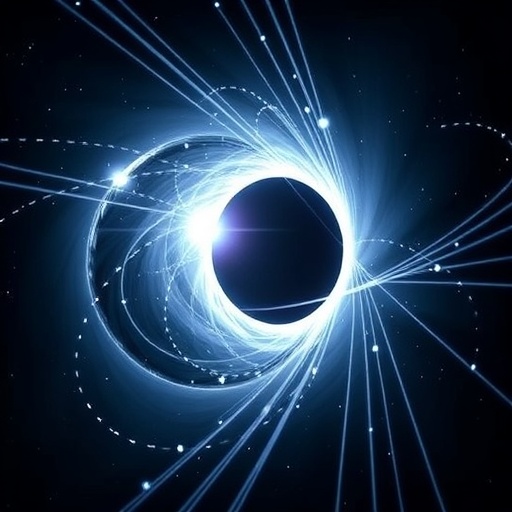On September 14, 2015, a groundbreaking event unfolded in the realm of astrophysics when LIGO, the Laser Interferometer Gravitational-Wave Observatory, detected the first direct evidence of gravitational waves. This momentous finding was the culmination of decades of work, beginning with Albert Einstein’s theoretical predictions made a century earlier. The gravitational waves detected were the result of the merger of two black holes, approximately 1.3 billion light-years from Earth, marking a historic leap in our understanding of the universe.
This achievement opened a new avenue of astrophysical observations, allowing scientists to explore the cosmos through gravitational waves, alongside the electromagnetic spectrum and cosmic rays. The discovery underscored the significance of LIGO, elevating it into a new echelon of astrophysical research and establishing gravitational waves as a new tool for understanding cosmic phenomena.
One of the latest significant discoveries from this field is a signal named GW250114, corresponding to a black hole collision detected on January 14, 2025. The event attracted considerable attention because it exemplified the advancements LIGO has made in terms of sensitivity and clarity of detection. This collision involved two black holes, each with masses estimated to be between 30 to 40 times that of our Sun, similar to the earlier detection of the first gravitational waves.
Thanks to a decade of technological advancements, the data generated from the GW250114 event was extraordinarily clear compared to previous detections. The improved detectors at LIGO allowed scientists to discern multiple subtle tones from the gravitational waves like notes in a cosmic symphony. This clearer detection not only contributes to our understanding of black hole mergers but also provides vital insights into the fundamental laws of physics.
With LIGO operating alongside other detectors such as Europe’s Virgo and Japan’s KAGRA, the gravitational-wave network known as LVK (LIGO, Virgo, KAGRA) has achieved remarkable collaborative success. This partnership significantly increased the frequency of black hole merger detections, allowing for greater collaboration and response times among astronomers seeking to observe events in real-time using optical telescopes.
The tools and methodologies employed to detect and analyze gravitational waves have seen revolutionary improvements over the past decade. For instance, the sensitivity of LIGO is now so acute that it can detect fluctuations in space-time smaller than one ten-thousandth the width of a proton, an extraordinary feat given the vast distances of the cosmic events being observed. This level of precision is unparalleled, marking LIGO as a benchmark for measurements in the physical sciences.
The black hole area theorem proposed by the late Stephen Hawking has also seen experimental verification thanks to the data gathered from gravitational waves. The theorem posits that the total surface area of black holes cannot decrease during a merger. In the case of GW250114, the team was able to ascertain that the final merged black hole had a greater surface area than the initial black holes prior to their merger, thus validating this vital concept in theoretical physics.
Hawking, who passed away in 2018, was keenly interested in how gravitational waves could illuminate his theories and the nature of black holes. LIGO’s ability to provide concrete observational data on such a fundamental issue in physics exemplifies the potential for future discoveries through gravitational wave astronomy. Observations derived from these signals are reshaping our understanding of fundamental physics, providing insight into concepts that have long been relegated to speculation.
In addition to black hole mergers, LIGO and Virgo have also detected signals from neutron star collisions. This was further highlighted during the historic joint observation of a neutron star merger in August 2017, known as GW170817. This event not only provided invaluable data about neutron stars but also linked gravitational waves to electromagnetic counterparts, showcasing the potential of multi-messenger astronomy.
The growth of the gravitational-wave community and its methodologies illustrates the collaborative spirit in contemporary science. Researchers from around the world contribute to a shared body of knowledge, advancing the frontiers of physics and ensuring that temporal filtering and data quality remain paramount in the analysis of gravitational wave events. Ongoing improvements in detection techniques and data analysis capabilities continue to reshape our understanding of the universe.
In the coming years, the LIGO-Virgo-KAGRA collaboration aims to foster further innovations to enhance sensitivity and detection range. Plans are underway for the establishment of LIGO India, which promises to anchor the gravitational-wave network in a third location to facilitate enhanced localization and increased detection probabilities. Moreover, the team is actively conceptualizing larger detectors, such as the Cosmic Explorer, which could provide unprecedented sensitivity and reach, potentially unveiling secrets related to the earliest black hole formations.
As gravitational-wave astronomy evolves, the implications for fundamental physics are profound. The ability to detect and analyze gravitational waves provides a unique lens through which the universe can be understood, effectively altering our cosmic perspective. This burgeoning field not only promises to unravel the mysteries of black holes but also to deepen our comprehension of the fabric of space-time itself.
As the observatory marks a decade since its first detection, the excitement surrounding gravitational waves reaffirms their momentous role in modern astrophysics. The quest for knowledge will continue as LIGO and its collaborators push the limits of what is known in a cosmos that is vast, mysterious, and beautiful.
To summarize, the contributions made by LIGO and its associated collaborations continue to pave the way for astounding discoveries in astrophysics, unlocking secrets of the universe and forging a clearer understanding of the enigmatic phenomena that govern cosmic dynamics.
Subject of Research: Gravitational Waves
Article Title: The New Era of Gravitational Wave Astronomy
News Publication Date: October 2023
Web References: N/A
References: N/A
Image Credits: Aurore Simonnet (SSU/EdEon)/LVK/URI
Keywords
Gravitational waves, black holes, LIGO, astrophysics, cosmic phenomena, multi-messenger astronomy, sensitivity, area theorem, Einstein, observational data, neutron stars.




